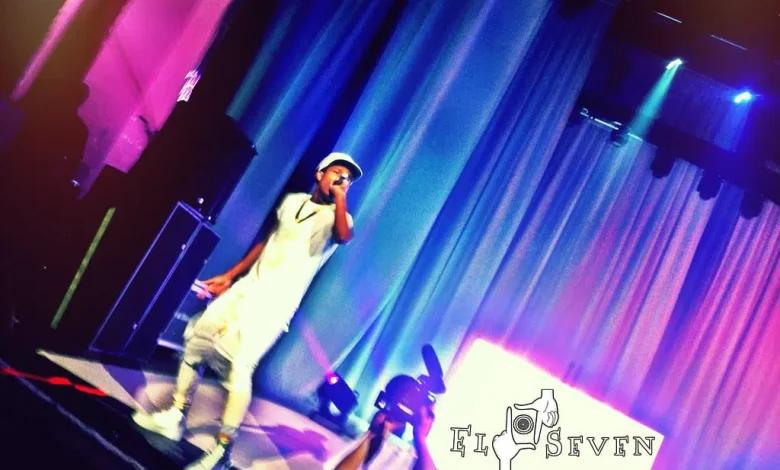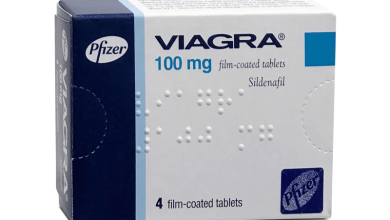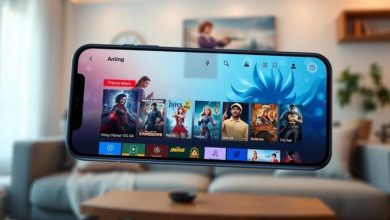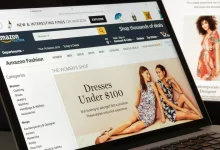The Influence of Rap on Modern Advertising and Marketing

Evolution of Rap Music and Its Cultural Impact
Rap music has emerged as a dominant force in global culture, evolving from its roots in the gritty streets of New York City to a worldwide phenomenon that transcends race, class, and geography. The genre’s journey began in the 1970s as a form of expression for marginalized communities, giving voice to the voiceless and painting vivid pictures of urban life. Over the decades, rap has morphed into a versatile and sophisticated art form that is as much about beats and rhymes as it is about making a statement.
The cultural impact of rap is far-reaching, influencing fashion, language, and lifestyle. The genre’s raw and unapologetic nature has fostered a sense of authenticity that resonates with audiences. As a cultural touchstone, rap represents more than music; it epitomizes a lifestyle that embraces individuality and self-expression. This authenticity has made it an attractive asset for brands looking to tap into a youthful and engaged demographic. Check out Lit Nightz Records for more insights into the cultural influence of rap and its evolving impact.
Rap’s influence extends beyond mere entertainment, shaping social discourse and challenging societal norms. Its power lies in its ability to give a platform to stories and perspectives that are often overlooked. As rap continues to evolve, its cultural currency only grows, making it an increasingly valuable tool for marketers and advertisers seeking relevance and resonance in a cluttered media landscape.
The Rise of Rap in Advertising
The integration of rap into advertising is not a new phenomenon, but its prevalence has soared in recent years. The rise can be attributed to the genre’s growing mainstream appeal and its proven ability to capture the attention of a broad audience. Advertisers have recognized that the energy and vibrancy of rap music can inject life into their campaigns, making their messages more memorable and impactful.
Initially, rap was used in advertising to target specific demographics, particularly young, urban consumers. However, as the genre’s popularity soared, its reach extended, allowing brands to communicate with a diverse and global audience. Today, the use of rap in commercials and marketing materials is a testament to its universal appeal and its ability to cut through the noise of traditional advertising channels.
The rise of rap in advertising is also linked to the genre’s adaptability. Marketers have found that rap can be molded to fit various themes and messages, from selling luxury cars to promoting social causes. The versatility of rap music enables advertisers to craft campaigns that are both unique and relatable, leveraging the genre’s inherent cool factor to elevate their brand’s image.
Incorporating Rap Culture in Marketing Campaigns
Incorporating rap culture into marketing campaigns is about more than just the music; it’s about tapping into the lifestyle and values that the genre embodies. Brands that successfully integrate rap culture understand that it offers a rich tapestry of symbols, language, and attitudes that can be harnessed to create a strong brand identity. It’s not just about dropping a beat; it’s about aligning with the swagger and spirit of rap.
One way marketers incorporate rap culture is by utilizing the visual aesthetics associated with the genre. This can include graffiti-inspired typography, urban fashion, and imagery that reflects the energy and dynamism of rap. These elements can be woven into advertising campaigns to create a sense of edginess and relevance, appealing to consumers who identify with rap’s counter-cultural roots.
Another approach is through storytelling that mirrors the narrative-driven nature of rap. Brands can craft stories that echo the triumphs, struggles, and aspirations commonly found in rap lyrics, thereby forging a more profound connection with their audience. By employing the same authenticity and raw emotion found in rap music, brands can communicate their message in a way that feels genuine and resonates with consumers’ own experiences.
Examples of Successful Rap-Inspired Advertising
There are numerous instances where brands have harnessed the power of rap to drive successful advertising campaigns. One standout example is Sprite’s long-standing association with hip-hop culture. Their “Obey Your Thirst” campaign featured prominent rappers like Drake and Nas, using their credibility within the genre to enhance the brand’s cool factor. These ads were not just about product placement; they were about aligning Sprite with the authenticity and self-expression at the heart of rap culture.
Another example is Beats by Dre, which leveraged the star power of rap icons like Dr. Dre and Kendrick Lamar to market their high-end headphones. The brand became synonymous with high-quality sound and a lifestyle that appeals to music lovers, particularly those within the rap community. Beats’ ads often feature the visceral energy of rap music, tying the product to the passion and intensity of the genre.
Fast-food giant McDonald’s also tapped into rap’s appeal with their “I’m Lovin’ It” campaign, which included a jingle that was undeniably influenced by rap rhythms and flow. This catchy hook, attributed to Justin Timberlake and produced by The Neptunes, was a game-changer for the brand, helping it to connect with younger consumers and imbue the global chain with a sense of modernity and relevance.
Rap Artists as Brand Ambassadors
The utilization of rap artists as brand ambassadors is a strategic move that has paid dividends for many companies. When a brand aligns itself with a rapper, it is not just acquiring a spokesperson; it is tapping into the artist’s following and credibility. This partnership can lend a sense of authenticity to the brand, as rappers are often seen as genuine and unfiltered, traits that can be incredibly attractive to consumers.
One such partnership is the collaboration between PUMA and Jay-Z. As a cultural icon, Jay-Z brings with him a sense of prestige and influence that is hard to match. PUMA leverages his reputation as a tastemaker to elevate its brand and connect with consumers on a deeper level. The collaboration goes beyond mere endorsement; it involves Jay-Z in product design and strategy, further solidifying the authentic connection between brand and artist.
Rihanna’s role as an ambassador for luxury brand Dior showcases another angle of this trend. Her involvement brought a fresh, edgy perspective to the brand, which helped Dior to reach a younger, more diverse audience. Rihanna’s influence in both the music and fashion worlds makes her an invaluable asset in bridging the gap between traditional luxury and contemporary culture.
Analyzing the Appeal of Rap Music in Marketing
The appeal of rap music in marketing is multifaceted. At its core, rap is about storytelling, and it is this aspect that marketers find particularly valuable. The storytelling inherent in rap allows brands to craft narratives that are engaging and emotionally compelling. The genre’s rhythmic and lyrical nature makes it memorable and catchy, qualities that are essential for successful advertising.
Additionally, rap music often embodies themes of overcoming adversity, ambition, and resilience. These universal themes resonate with a wide audience and can be powerful tools for brands that want to inspire or motivate their consumers. By aligning with these messages, companies can position themselves as more than just purveyors of products or services; they become part of their customers’ aspirational journey.
Furthermore, rap music and culture have a global reach, appealing to diverse demographics. The genre’s ability to cross cultural boundaries makes it an excellent vehicle for brands looking to expand their market presence. By incorporating rap into their marketing strategies, companies can communicate with a broad audience in a language that is energetic, contemporary, and universally understood.Challenges and Controversies in Using Rap for Branding
While incorporating rap into branding strategies offers many benefits, it also comes with its share of challenges and controversies. One significant issue is the potential for cultural appropriation. Brands must navigate the fine line between using rap culture to enhance their image and exploiting it. If the use of rap in advertising is perceived as inauthentic or disrespectful, it can lead to backlash and damage the brand’s reputation.
Another challenge is the content of some rap music, which can be controversial due to explicit language, themes of violence, or misogynistic undertones. Brands must be cautious about the messages they associate with and ensure that the rap content they use aligns with their values and public image. Missteps in this arena can alienate consumers and lead to public relations crises.
Moreover, the rapidly changing landscape of rap music means that what is trendy today may not be tomorrow. Brands must stay attuned to the pulse of the genre to remain relevant. This requires a deep understanding of rap culture and an ability to anticipate shifts in musical tastes and societal attitudes.
Future Trends of Rap in Advertising and Marketing
Looking to the future, we can anticipate that rap will continue to play a significant role in advertising and marketing. One trend that is likely to gain momentum is the collaboration between brands and rap artists in creating original content. This goes beyond traditional endorsements, involving artists in the creative process to produce music, videos, and other marketing materials that are authentic and engaging.
Another trend is the increasing use of technology to enhance the integration of rap in marketing. With the rise of social media platforms like TikTok, where music plays a central role, brands have an opportunity to leverage rap in short-form content that is shareable and has the potential to go viral. Additionally, advances in artificial intelligence could allow for the personalization of rap content, tailoring it to individual consumer preferences.
Brands are also likely to explore more nuanced and sophisticated uses of rap, moving away from stereotypical portrayals and towards a deeper engagement with the genre’s diversity. This could involve highlighting different subgenres of rap or showcasing emerging artists who bring fresh perspectives and sounds. As the cultural conversation around rap evolves, so too will its application in the world of advertising and marketing.
Leveraging Rap Culture for Brand Authenticity
For brands aiming to maintain authenticity when leveraging rap culture, it is essential to approach collaborations and campaign development with respect and understanding. This means working with artists and cultural insiders who can provide genuine insight into the genre. It also requires brands to commit to long-term relationships with the rap community, rather than one-off campaigns that may come off as opportunistic.
Brands can also foster authenticity by supporting the rap community in tangible ways, such as sponsoring events, providing platforms for up-and-coming artists, or contributing to causes that matter to the community. This level of involvement demonstrates a brand’s investment in the culture beyond just the commercial benefits, helping to build trust and loyalty among consumers.
Ultimately, authenticity in leveraging rap culture comes down to consistency and congruence between a brand’s messaging and actions. When brands can align their core values with those represented in rap music, they create a powerful synergy that enhances both their image and their connection with consumers.
Conclusion: The Lasting Impact of Rap on Modern Advertising
The influence of rap on modern advertising is a testament to the genre’s power and versatility. As we have explored, rap music offers advertisers a rich array of tools for connecting with audiences, from its compelling storytelling to its universal themes and edgy aesthetics. However, the successful use of rap in marketing requires a nuanced understanding of the culture and a commitment to authenticity.
As we look to the future, it is clear that rap will continue to shape the advertising landscape. Brands that are able to harness the energy and authenticity of rap culture while navigating its challenges will find themselves at the forefront of marketing innovation. The influence of rap on modern advertising is not just a passing trend; it is a profound shift in the way brands communicate and connect with consumers.
The symbiotic relationship between rap and advertising reflects a broader cultural evolution where brands are not mere bystanders but active participants in the cultural dialogue. As rap music continues to evolve and inspire, it will undoubtedly carve new paths for creative expression in the realm of marketing, leaving a lasting impact on the industry and culture at large.









